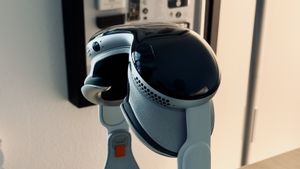JAKARTA – We are on the cusp of a new generation of wireless headphones that are more power efficient, sound better, and support new features. For example the ability to connect an "unlimited" number of devices to a single source.
That's possible thanks to Bluetooth LE Audio technology. It is an umbrella term for the new feature set for Bluetooth devices that was officially announced by the Bluetooth standards body today.
Bluetooth LE Audio was announced in early 2020, and the Bluetooth SIG initially hoped that the supporting devices would be released before the end of that year. But after significant delays due to the pandemic, today's finalization of the specifications means that manufacturers can now start adding support for the standard to their devices.
"It also means that the first compatible products will be available before the end of the year," said Bluetooth SIG CEO Mark Powell, as quoted by The Verge.
LE Audio Ushers In a New Era of Smart Audio. Read our latest Q&A with Realtek: https://t.co/SXClx0UnLC #LEAudio #Auracast
— Bluetooth (@BluetoothSIG) July 11, 2022
“Today is a proud day for the Bluetooth SIG member community,” said Powell. “Our members overcame the many challenges presented to them in recent years, to complete the largest specification development project in the history of Bluetooth GIS. LE Audio expands the boundaries of what is possible for the wireless audio market.”
There are several elements to Bluetooth LE Audio, but the one that is likely to have the most impact on most people is the new LC3 codec. This code is designed to be a much more efficient way to transmit audio.
That could mean significantly higher audio quality at the same bit rate than the current baseline SBC codec, or even (Bluetooth SIG claims) slightly better audio quality at less than half the bit rate. Lower bit rate means lower power consumption, which means longer battery life.
The LC3 is just one of the features that fall under the LE Audio umbrella. Another key aspect is its ability to connect multiple audio devices to a single source with a feature called Auracast.
This can be as simple as pairing two pairs of headphones to one phone, or pairing multiple earbuds to one TV located in a public space such as a gym.
The Bluetooth SIG website outlines how users can search for audio sources as you would for a Wi-Fi network, or connect by scanning a QR code, or tapping an NFC-enabled surface.
Other features include better support for true wireless earbuds, as Bluetooth LE Audio allows each individual earbud to maintain its own separate connection with the source device.
It is hoped that, when combined, all the features of LE Audio will be of great benefit to hearing aids in the future.
Between Bluetooth LE Audio, and Qualcomm's recently announced aptX Lossless standard, Bluetooth audio will take a big step forward in the months to come. But what is currently unclear is whether we need to buy an entirely new device to enjoy its benefits.
The Bluetooth SIG website notes that it's possible that some existing devices will be updated to support Bluetooth LE Audio (and initial support for the standard is already available in the Android 13 beta), but I suspect most people won't benefit until they buy the upgraded hardware.
The English, Chinese, Japanese, Arabic, and French versions are automatically generated by the AI. So there may still be inaccuracies in translating, please always see Indonesian as our main language. (system supported by DigitalSiber.id)









